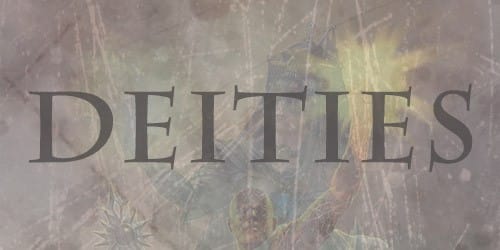
This is not a comprehensive list but rather a sampling to get one started on the path to enlightenment.
| Deity | Alignment | Area of Influence; Worshippers | Domains/Subdomains |
| Ancestor Spirit | NG | ancestor, nature, wilderness, wisdom; vikmordere | Animal, Community, Plant/Ancestors, Seasons, Souls |
| Arnut | LN | cold, purity, judgment, winter; arctic natives | Protection, Water, Weather/Ice, Seasons, Purity |
| The Axiomatic General | LN | battlefield tactics, decision-making, leadership, ,military campaigns, victory; military officers, martial leaders, monks, sages, experts, and philosophers of absolute truth | Law, Nobility, Strength, War, Inevitable, Leadership, Resolve, Tactics |
| Balir | LN | craftsmanship, honor, dweorg, dwarves | Artifice, Glory, Law / Construct, Toil, Metal, Honor |
| The Current | CN | insanity, mysticism, seas, Underworld waters, the unknown | Madness (Nightmare), Magic (Arcane), Void (Dark Tapestry), Water (Oceans) |
| Eureum | LN | autumn, death, rebirth; undertakers, executioners, druids | Death, Healing, Repose/Decay, Growth, Loss, Resurrection |
| Flaesuros | LG | honesty, life, light, youth | Good, Healing, Knowledge, Law, Sun |
| Hado | LN | judgment, observance, community, summer; community leaders, scouts, desert natives | Community, Law, Nobility/Ancestors, Family,Resolve, Seasons |
| Hivaka | CG | drow, freedom, justice, Underground | Chaos, Darkness, Liberation, Travel |
| Ja Qua | LN | strength, the hunt, family, NaeraCull | Strength, Animal, Law, Protection/Ferocity, Fur, Resolve |
| Leacim | CN | chance, guile, illusion, misfortune, self-determination, thieves | Chaos, Entropy, Deception, Luck, Trickery |
| Musta’Vohi | NE | birth, health, motherhood, lust, pregnancy | Charm, Darkness, Healing, Protection |
| Naneth | N | elves, forest, agriculture, combat | Fireside, Healing, Knowledge, Provider, Protection, Sun, War |
| Naraneus | NE | darkness, drow, evil, forbidden knowledge, spiders, venom | Destruction, Drow, Evil, Knowledge |
| The Natural Force | NG | earth, growth, health, nature, prosperity | Earth (Caves), Good, Healing (Resurrection), Plant (Mushroom) |
| Nearru | CN | darkness, death, madness, secrets, moon | Chaos, Darkness, Madness, Repose, Trickery |
| Onael | LE | evil, forest, order, tyranny, war | Evil, Law, Nobility, Strength, War |
| Perenna | NG | dance, fashion, flowers, rain, spring; fashionistas, gardeners, upper class | Charm, Earth, Plants/Day, Growth, Seasons |
| Storjeger | NG | community, forest, hunting, survival | Ancestor, Animal, Community, Luck, Provider, Weather |
| Vasi | N | freshwater, lakes, pools, oases, grottos, springs, peace, life, wisdom | Water |
| Zagnexis | CE | control, insects, poison, procreation, vermin | Community (Family), Destruction (Catastrophe), Travel (Exploration), War (Blood) |
 Ancestor Spirit
Ancestor Spirit
Titles Breath of Life, Life Spirit
Home positive energy plane
Alignment NG
Portfolio ancestor, nature, wilderness, wisdom
Worshippers Vikmordere
Domains Animal, Community, Plant
Subdomains Ancestors, Seasons, Souls
Favored Weapon wooden staff
The Ancestor Spirit venerates reconnection with nature, and exploration of one’s inner being without the scourge of individual financial gain.
The pure energy which forms this deity is comprised of the souls of the original ancient settlers of the Klavek Kingdom/Vikmordere region. The knowledge and wisdom of an entire people are contained within this deity, giving her a very unique connection and insight into human-kind.
History
Nature’s history runs deep, evolving as the omnipresent energy of the universe and bound as one with all matter, living and non-living.
Appearance
The Ancestor Spirit has no visible appearance but can appear to mortals through nature in a myriad of ways, even beyond that of the humanoid imagination.
Church
There is no organized religion, all is one and one is all.
Worshippers & Clergy
Those bound to the ancestor spirit do not consider themselves worshippers nor clergy, they are one with the Universe and it is one with them. They seek only to prevent the destruction of nature and continue the evolution of the natural world through unity, harmony, and wisdom.
Holy Text
The Ancestor Spirit teaches the value of respecting nature and cultivating a sense of community. Those who revere this spirit find beauty in all things, even in their enemies, for there is something of oneself within all living beings.
Special Notes
The Ancestor Spirit is stringently anti-undead.
 Arnut
Arnut
(minor-goddess)
Titles The White Lady, Snow Queen, The North Wind
Home elemental plane of water
Alignment LN
Portfolio cold, purity, judgment, winter
Worshippers arctic natives
Domains Protection, Water, Weather
Subdomains Ice, Seasons, Purity
Favored Weapon longspear
Considered a minor goddess across most of the land, paid service only as winter approaches, Arnut is a popular patron in the Klavek Kingdom for her ties to the frozen landscape and to winter itself.
History
Arnut has existed as long as winter itself, born as the world began turning. Her and her three siblings divided up the seasons of the year amongst themselves, taking the cold and unforgiving realm of winter for herself.
Appearance
Arnut most often appears as tall, hairless woman with pale blue skin, wearing a white robe that falls down into a swirling cloud of snow about her feet. She also appears as a cloud of snowflakes carried on the wind, whispering into the ears of passersby.
Church of Arnut
Arnut’s worship is strongest in the Klavek Kingdom, though shrines for her and her siblings appear across the continent, worshipped in passing as the seasons change.
Worshippers and Clergy
Arnut’s clergy are primarily female, those who tend the homestead and shelter the family from the cold. They usually dress in white robes, and carry lanterns with them hanging from long spears to help guide others through the snow.
Holy Text
Winterfall: This book describes not only the practices of Arnut’s clergy, but also how to celebrate her holy days. It typically also features additional documents detailing both the signs for changing seasons, as well as what must be done to prepare for winter.
 The Axiomatic General
The Axiomatic General
Titles Overseer of War, Lord of All Wars, Iron Soul, The True Balance, Wise Tactician, All-Knowing Upholder, The Redoubtable Warrior, The Inevitable Victor, The Warwise
Home Not known (currently active in Klavek Kingdom)
Symbol Decorated iron rod (sacred color: white)
Alignment LN
Portfolio Battlefield Tactics, Informed Decision-Making, Leadership, Military Campaigns, Victory
Domains Law, Nobility, Strength, War
Subdomains Inevitable, Leadership, Resolve, Tactics
Favored Weapon Light mace
Favored Animal Heavy warhorse
Introduction
The Axiomatic General is the god of those who use the self-evident and unquestionable power of law to further a cause. Most frequently this is during war, where neither the unhelpful morality of good and evil nor the confusion and disorder of chaos allow for clear decisions to be made and victory achieved. The Axiomatic General appears wherever clear-thinking, considered tactics, and balanced plans are being prepared or followed. While the field of war is the usual site for these activities, the Axiomatic General has been known to appear during complicated but emotionless court cases, and sometimes even when the cold, detached clarity of true monkish enlightenment is reached.
The Axiomatic General is neither male nor female, instead being a creature devoid of physically distracting bias. It can appear as a female or male of any humanoid species, whichever form is most likely to aid with clarity of decision making.
Dogma
The Axiomatic General and its followers wish to bring the clarity of law to those places that currently live in emotional turmoil, and to demonstrate to all the axiomatic nature of law when applied to war, legal frameworks, and personal actions. It expects it believers to instigate and adhere to meaningful laws while at the same time exposing and amending those which are ludicrous, outlandish, convoluted, unenforceable, or contrary. The Overseer of War abhors any decision or process that allows an individual to take unfair advantage of another, either through methods such as emotional blackmail, the abuse of personal power, or as a result of chance. It encourages its followers to engage in long-term ordered “wars” rather than short-and-sharp fights—the chaos of battle is well known, but by carefully considering one’s options, testing one’s theories, and then following through with a well-conceived plan, one can make their way to victory in an ordered manner. If all around them are clear about their intentions, one can see their actions are as fair and just as possible, and that trade and public prosperity, the courts, and the growth of society as a whole can continue during even the greatest of conflicts.
The Lord of All Wars promotes careful consideration in all matters and expects its followers to be able to provide self-evident truths for all their actions. Haste, guesswork, and self-indulgence lead to reliance on emotion and base, uncontrolled actions. It disapproves of reliance on government or any religious institution that fosters blind trust or, even worse, unprovable belief, explaining that those with sound judgement, mental discipline, and an unshakeable grasp of sensible, irrefutable laws can overcome the inauthentic evidence and invalid arguments of the emotional and chaotic masses.
History
Once a mortal humanoid, the Axiomatic General ascended to become deified, although it is unclear what exactly it once was as virtually all races have a legendary historical figure that has risen from the mortal ranks to those of the divine after following the path of a great warrior who tirelessly supported its deity. What is evident is that the Overseer of War became more powerful than this original deity and ended up judging it at the culmination of a long conflict. The Lord of All War’s final verdict and victory provided the energy and evidence needed for the warrior to rise to godhood itself.
The Axiomatic General tends to appear in history (as the simple warrior of its humanoid type) when the race’s pre-eminent lawful deity first wages war against more than one non-lawful foe, whether they be good, evil, or chaotic. It goes by many titles (a few of which appear above) but always has the ability to make clear, concise, and entirely accurate decisions even in the heat and fog of combat. Tales invariably tell of the Overseer of War having to uphold the lawful aims and ambitions of another deity’s followers when the god or goddess itself proves to be weak and fallible. Then the Axiomatic General steps in to save those same worshipers before judging the god in question and finding it wanting. After this it takes the fight to the enemy, turns the tide of the war with unquestionable judgement, and becomes a deity in its own right. After this the Lord of All Wars is always found leading those who know its words to be the truth through conflict, disagreement, and dispute—a reliable route to absolute, undeniable victory.
Relationships
The Overseer of Warl is entirely dismissive of any and all other deities that do not in some part embrace lawful beliefs. While those that promote chaos feel its full wrath, the Axiomatic General constantly seeks to disprove the tenets of neutral good and neutral evil deities because of their reliance on sentimental or self-centered emotions. It tolerates lawful good and lawful evil gods as long as their lawful nature is at the forefront of their actions, and is just as likely to support a lawfully-minded archon in a conflict against an evil devil as it is a lawfully-minded devil that wages war against an overly-good archon; ultimately, the balance of law is what is important.
The Axiomatic General is opposed by all those who promote personal choice, uncontrolled actions, and “belief”—it is guaranteed to come into conflict with deities that support and nurture bards and barbarians, and frequently with those that nurture wild sorcerers. Because it is so closely linked with conclusive and categorical truth, the Lord of All Wars sometimes finds itself on the side of sages, experts, philosophers and academics that devote their lives to uncovering a lost or hidden truth, whether military, legal, commercial, or magical.
Appearance
The Axiomatic General usually appears as a healthy, vibrant member of the appropriate race and can be either female or male (or neither). Its clothing is always practical for the situation but is clearly designed to instil confidence and invariably a bright white. The god’s symbol, the decorated iron rod, is sewn into the space above the heart and mimicked by the weapon it wields. The Overseer of War always carries a +3 axiomatic brilliant energy light mace, the look and effect of which is in line with the main domain of the senior cleric in the vicinity as follows:
| Domain | Rod type |
| Law | Alertness |
| Nobility | Splendor |
| Strength | Flailing |
| War | Rulership |
Legends dictate that the Axiomatic General occasionally appears as a fully advanced, adamantine-coated marut, but the last occasion this was recorded was many generations ago.
Providence
Followers and clergy of the Lord of All Wars know that clarity of planning, deeper understanding of the way forward, or insight into a problem that has been gained after careful thought and consideration has come from their deity. This knowledge doesn’t appear suddenly but is the reward for taking time and exploring all possibilities. The Oversee of War thinks highly of those who consider their options before acting decisively, as well as of those who follow through with long-term plans without faltering.
Any sign of plans failing, confusion reigning, or participants not understanding their role is seen as a sign that the Axiomatic General is displeased and expects greater discipline and forethought.
Servants
The Axiomatic General rewards those who organize well and keep to agreed plans, no matter how long this may take. These machinations often take many generations in the case of shorter-lived humanoids such as goblinoids and humans, or the entire life of the longest-living elves. Servants must be prepared to sacrifice the immediate for the longer term, understand that they may lose those around them today for the betterment of a lawful population tomorrow, and recognize that the needs of a lawful future outweigh any considerations here and now.
The Overseer of War grants particular favor to those who constantly uphold the law—inevitables are viewed with esteem alongside formians and other hive-minded creatures. Followers that devote themselves to a lifetime of achieving a long-term lawful aim regularly receive insight and clarity from their god. Humanoids that either spend a significant portion of their time gaining greater insight into a particular path or are able to rapidly judge the features and benefits of a number of possibilities before quickly making the correct decision often gain a divine hint or two.
The Church of the Axiomatic General
Sites of worship to the Lord of All Wars serve one purpose: to ensure that correct decisions are made to further indisputable truth. They range in size from an officer’s table in their tent, a simple sand tablet on which a cleric explains a truth, or in a lawyer’s or sage’s rooms, to the chambers of a country’s most magnificent courtroom, the order flags at the front line of the latest battle in a war, or the grandest library within the Klavek Kingdom’s most spectacular cathedral to the Axiomatic General. Churches to this god are all simple, plain affairs that remove mental distraction and clutter at the same time as allowing axioms and tenets spoken by the Overseer of War to be spread effectively and efficiently.
Worship of the Axiomatic General is frequently silent as followers consider practical issues at hand as well as long-term problems that require a more considered solution. Followers frequently engage in debates, most of which are serious but enjoyable affairs—there is no time for frivolous thought when the Lord of All War’s tenets are involved—although there is no sense of “victory or defeat” in these sessions (the aim is to reach the truest, most accurate solution to a question, and everybody learns something.) When necessary, churches of the Overseer of War provide a neutral meeting point between warring factions of good and evil, although only the most experienced and senior of clergy attempt to mediate between chaotic elements. The Axiomatic General has shown that the wisest course for followers of law is to work together to overcome chaos through any means possible before resolving philosophical and personal lawful differences using contemplation and debate.
The clergy of the Overseer of War organize themselves in a clear and obvious hierarchy in the same way that any modern military, business, or courtroom would do. Similarly, religious and educational centers that follow the Axiomatic General have a plain structure in place that shows who has best demonstrated an understanding of the god’s aims and objectives. No matter where or how the Lord of All War is followed, its churches are defined by their grasp of unequivocal truths, of unimpeachable laws, unbeatable tactics, and unquestionable enlightenment. Churches that exhibit knowledge over belief and can demonstrate undeniable evidence for these truths have the greatest standing, no matter what their size. Worshipers rise up the ranks in the same way: anyone who can establish irrefutable knowledge and information is given ever greater responsibilities. At the same time, mistakes aren’t considered failure if the individuals concerned can show they did all they could to establish clarity and a considered answer. All they have to do is recognize that further investigation has produced better knowledge and make sure they don’t repeat the mistake. As the Lord of All Wars is happy to develop plans over many generations, errors that can be rectified bear little consequence.
Churches worshiping the Axiomatic General are openly found in the center of lawful societies and towards the outskirts of those populations with no preference for law or chaos, but are seemingly absent from chaotic cultures. The Overseer of War prefers his followers to surround such cultures and gradually move inwards until the chaos is crushed out of them—a process that takes as long as is necessary, designed to ensure no worshiper is tricked into joining chaos from within.
Services to the Axiomatic General are ordered affairs, comprising either contemplation of the truth or respectful presentation of findings and subsequent decision-making they influence. In all situations there is ample opportunity for everyone who wants to speak to do so, although followers recognize the need to act swiftly during war situations and develop a truncated, precise style of presenting their findings.
Worshipers
The Axiomatic General is primarily worshiped by military officers but also draws in judges, lawyers, barristers, sages, monks, and those who would advance society in an ordered and structured way. Those who indulge in chaotic thoughts and acts are ignored at all times.
Clergy
The clergy of the Overseer of War are not necessarily clerics, although if they aren’t they are only allowed to represent the god within their own sphere of expertise and influence (for example, military officers can only lead services and discussions about military matters). Any member of the clergy who is a cleric is required to lead a service in an overarching capacity even if the content is decided by the senior subject expert. In all situations the most experience cleric leads a service, with assistance as appropriate from other members of the congregation.
The Axiomatic General does not support paladins, despite their martial outlook. Their tendency towards good leads them to not always consider the balanced needs of a lawful life, which in turn means their judgment isn’t always going to be the best it can be in some situations.
Temples and Shrines
Buildings devoted to the Lord of All Wars are functional, unadorned, designed to serve all aspects of the god’s tenets, yet clearly focused on one domain more than others (whatever that may be). It isn’t unusual for there to be four temples next to each other—one for each aspect of devotion with followers visiting whichever is most appropriate for their needs.
All sites of worship have one item in common: a magical lead box with an amazing lock that holds a copy of the four holy texts of the Axiomatic General (The Four Planes of Certain Truth) plus one additional book of specific thoughts on the area of expertise of the congregation. These boxes are identical as adornment or elaboration is forbidden as an unnecessary distraction, and are always at the center of any service of worship or decision-making process. Whenever the box is locked after its final use for the day, the text within each book is updated via divine intervention if a more accurate and truthful version of any piece of information has been discovered and when new facts have been uncovered.
Each place of worship also contains the thought processes of anyone who has worked to uncover indisputable truths, as well as the evidence that demonstrates that truth. Whenever someone is uncovering a new truth, their work-in-progress materials are stored here as well.
Holy Texts
The Four Planes of Certain Truth contain the pertinent and unequivocal statements confirmed by the Axiomatic General. When stored in their magical box they are updated via divine intervention when it is locked at the end of the day. No decision is made without this box being present, even if it isn’t used. Clerics of the Overseer of War receive notification of changes as part of their meditation; all clerics and service leaders are encouraged to learn the texts by heart (as interpretation isn’t required).
Each book bears a simple cover, binding, and little decoration other than an iron rod over a stylized letter that identifies its contents. Other documents stored at temples and shrines have these two symbols plus the initials of the author and the date of publication. When any document is superseded, the date of its relegation from cannon is stamped on the cover and the original symbols scored through.
Axioms of War
This contains the latest approved plans for war as a whole, as well as tactics for individual fights. The core content—when consulted prior to a battle—confers both a confidence-boosting and calming effect as it confirms how its actions bring eventual victory in the war (with that day’s battle an important part of it). Chapters detail the stages of engagement and explain the surest way forward at each point. They describe how a lawful plan can be overcome by the sheer weight of chaos, but also how to learn from that experience and counter it in the next battle.
Axioms of Law
This contains the latest approved plans for passing legal judgment as a whole, as well as tactics for individual cases. When consulted prior to establishing guilt or innocence, it confers both a clarity- and authority-boosting effect as it confirms how its actions ensure the correct judgment is reached. Chapters detail the stages of ascertaining the truth from all that has been presented as evidence as well as methods to consider it in an effective, efficient, and impartial manner. They also describe how well-made laws can be twisted and broken by the inherently devious, but how to rewrite those laws to ensure this doesn’t happen in future.
Axioms of Decisions
This contains the latest methods and directions for effective and efficient meditation as well as long-established research techniques from the church’s greatest sages and experts. When consulted before an investigation is started, it confers a mind-clearing and attention-focusing effect as it confirms how its actions allow a user to reveal the most pertinent and accurate information. Chapters detail how to consider what needs to be discovered, how to ensure what is found matches the initial requirements, and then how to use the information to make the correct decision. They also describe how distraction, obfuscation, and distortion of aims and objects (such as short cuts) lead to incorrect decision with long-term consequences.
Axioms of Enlightenment
This contains pathways to understanding the world at large and the part one plays in that world as well as how the best of life is achieved through order. When consulted before meditating, it confers an open-mindedness that ensures the route to enlightenment is properly followed as it confirms how its actions allow a user to reach self-knowledge without deviation or distraction. Chapters give details on what to do before, during, and after meditation, as well as how to realize enlightenment has been reached. They also describe how our contemplation can be lessened by the actions of others, but how these digressions can be overcome and enlightenment eventually reached.
Holidays
The Axiomatic General is not celebrated at any specific festivals. Instead when the law prevails during any of the god’s areas of interest, followers offer a prayer of thanks no more than 30 minutes after the event. If gratitude is shown later than this, it probably means the follower was distracted from the task in hand and has acted in a chaotic way to make the thanks fit in. Better to acknowledge the effect of the Overseer of War with one’s body and mind than take yourself away from a pressing matter and make two situations chaotic.
 Balir
Balir
Balir is a dweorg (dwarf) only deity
Titles Master of the First Forge, The Burning Hero
Home The Plane of Earth
Alignment Lawful Neutral
Portfolio Craftsmanship, Honor, Dweorg, Dwarves
Worshippers Dwarves, Craftsmen
Domains Artifice, Glory, Law
Subdomains Construct, Toil, Metal, Honor
Favored Weapon Warhammer
Balir is considered to be first among dwarves, yet least among gods – a mortal hero granted divinity through his great actions and heroic sacrifices.
History
Balir’s mortal life began as a dweorg, a remnant of the once great race from which all dwarves stemmed. He was dissatisfied; dwarves had become a lesser race, overcome by the drow, among others. His life was punctuated by constant struggle and heroic feats that are the things of legend: he re-mastered the lost arts of metalworking once known by his ancestors; he defended his homeland single-handedly against creatures of the Underworld; and he built himself a flawless suit of unbreakable armor. Inside this shell he was an unstoppable force, and Balir took back thousands of miles of once-dwarven lands. He rose higher than any before making the fatal flaw of offering his hand in peace to the drow.
The story goes that the drow cast a curse of burning into his unbreakable armor, sealing the dwarf inside and setting it ablaze forever. But in this moment the gods saw Balir as the greatest martyr of his people and granted him a spark of divinity; he awoke as a god, still within the armor that had become his tomb, and departed the mortal realm.
Having risen from the ranks of mortals, Balir has been forced to prove himself to the gods over and over again, showing them he is worthy. His feats as a god are no less than his feats as a mortal, although they take place in realms far beyond man’s comprehension. It is from one of these divine toils that he claimed his mighty hammer, Soul Forger – a weapon clearly claimed from a creature many times larger than Balir himself.
Even as he found himself a god, Balir kept his destroyed mortal form as a sign of his penance. Instead of divine flesh, he constructed a metal body for himself to replace the one he lost. This new skin is without the flaw of mercy that destroyed him as a mortal. And although Balir’s scarred face is unmistakably dwarven, his body is anything but. Cast of white mithral and black iron, he appears more machine than man. Now, even with his drow-cursed armor destroyed, he still blazes with the murderous fire; in his chest, he carries a spark from which the sun was born. When he does not appear in his divine form, Balir assumes the guise of a young dwarf, typically bearing scars on his face and arms from flame.
Churches, Clergy, and Worshippers
Churches to Balir are at once humble and magnificent. Their areas of worship are simple and unadorned, although always practical, in a manner befitting dwarven life itself. Whether the smallest shrine or grandest cathedral, sites dedicated to Balir always stand near a place of work, of toil, and of creation. In them, they are guided by Balir’s ancient knowledge and secrets to produce machines, mechanical goods, and works of active art unlike anywhere else in the world. Balir’s clergy are predominantly dwarven, although some humans do acclaim to his faith as well. Where they can, they dress in mithral and crimson – styling themselves after their god. Poorer members of the faith dress instead in white and yellow. Worshippers almost always offer constructed items as their offering. If they do resort to just money, it’s always directed toward a newly-qualified crafter, or a promising apprentice.
Holy Text
The Life of Balir is unlike any standard book of holy teachings. Instead, this tome is almost three thousand pages long and details the thousand trials and tribulations of Balir’s life, written in such a way that it is more like a dwarven self-help book than divine instruction. Some versions have additional volumes discussing the merits of each action Balir took, although these are known to be opinion, not fact. The original text is unchanged from when it was penned by Balir’s own son, after the dwarf’s ascension to godhood.
 The Current
The Current
Alignment CN
Portfolio Insanity, Mysticism, Seas, Underworld Waters, the Unknown
Domains Madness (Nightmare), Magic (Arcane), Void (Dark Tapestry), Water (Oceans)
Favored Weapons Tentacle (whips, spiked chains)
Favored Animals Octopus, Squid
History
Extremely little is known about the Current, save that it is the only god of the vestraadi. The blind men of the Underworld once had an entire pantheon that matched the grandeur of their ocean-bed civilizations, but the Current appeared from the depths of the cosmos as suddenly as a gigantic aquatic predator and consumed them all.
The other deities of Aventyr are forever vigilant for even the slightest brush of the Current’s tentacles in their plans or near their essence, keeping a respectful distance from the maddening god. Its motives are totally unpredictable, though it strikes swiftly and without warning when it is suited to do so. The affairs of the gods don’t seem to bear any interest to the Current, however, and it is thought to be slumbering, like the massive beasts that lay in the ruins of the vestraadi’s ancient civilizations. Indeed, some believe that these enormous predators are somehow related to the maddening god and not without good reason; they appeared not long after the Current came to Aventyr.
Appearance
Records of The Current’s appearance are extremely vague by necessity; those that look upon it are driven utterly mad. The few reliable accounts claim that it is a floating, slithering or pulsating mass of writhing tentacles, the end of each covered in barbs of colors for which there is no shade or name.
Churches of the Maddening God
These revered houses of worship completely encompass those within them, covered in sculptures of tentacles that extend throughout the structure. The holiest of these churches are actually made from the recovered limbs of enormous squids and octopuses—the architecture within them drives any non-followers of the Current to madness, afflicting any creature within with a form of insanity should they fail a DC 16 Wisdom saving throw.
Holy Text
No books exist for the religion of the maddening god; instead, the vestraadi keep song strings. When wound or unwound underwater, these magical cords play hymns of the Current’s religion (in a tongue those that hear them can understand). The holiest and most valuable of these song strings are said to relate the true origins of the aquatic deity, but are said to drive those that hear them mad with the voice of the Current, cursed to forever live with its echo in their mind.
 Eureum
Eureum
Titles Eureum, The East Wind, He who Renews, The Sad Death
Home elemental plane of earth
Alignment LN
Portfolio autumn, death, rebirth
Worshippers undertakers, executioners, druids
Domains Death, Healing, Repose
Subdomains Decay, Growth, Loss, Resurrection
Favored Weapon scythe
Eureum is commonly portrayed as an unfeeling god, who cares little for the world so long as nothing interrupts the cycle of life to death. However, this view of him is false, for more important to him is the return again to life, and the continuance of the cycle of life.
Often, this message is confused by his followers and those who encounter them, fanatics who see in him little more than another aspect of death. Only a few of his followers are true believers, often those who live within nature and see the true nature of the cycle of life and death.
History
Eureum, along with the other three seasons, came into being as the world began to turn. The others chose their domains carefully, but Eureum took his from necessity. For, there must be balance in life as there must be balance in death. He feels it is job to keep the other seasons in check, and it was he who proposed dividing the world into the four seasons we know it as today.
Appearance
Eureum often appears as a faceless figure, male or female, draped in a robe made of dried leaves and carrying a scythe in one skeletal hand, and a shovel in the other. It is said, that beneath the cowl, he perpetually weeps.
When he does not appear in a humanoid form, he appears as a collection of dry autumn leaves blowing in the wind.
Church of Eureum
Much to his dismay, most of Eureum’s churches are misguided, focusing only on one aspect – either death, or rebirth – and are often fanatical in their beliefs. He considers only a few shrines to him, often deep within forests and away from civilization, to be true churches.
Worshippers and Clergy
Eureum’s followers are more often fanatics than they are proper clergy, focusing either on bringing either death or life wherever they go instead of maintaining the cycle of life and death.
His true followers dress in dirty brown robes, often matted with dried leaves and crawling with tiny insects.
Holy Text
On Death: This book details the cycle of death, and life, and how all life depends on the death for sustenance as much as death depends on life – for one is impossible without the other. It also decries undead as abominations – for their death does not breed more life – only more death.
 Flaesuros
Flaesuros
Titles Brightest, Light of Life, Morning Star, The Never Shadowed
Home The Sun
Symbol A five-pointed star with a ring wrapped around the center
Alignment LG
Portfolio: Honesty, Life, Light, Youth
Domains: Good, Healing, Knowledge, Law, Sun
Favored Weapon: Morningstar
Flaesuros (FLAY sur oss) is blindingly beautiful, with very pale skin, shoulder length, curly light brown hair, and eyes the color of jade. He is short and broad-shouldered and generally has a blissful expression. He usually wears scant clothing, dyed red-orange.
Unlike other deities of the sun, Flaesuros is an easy-going kind of god. He places more emphasis on doing good for others and the community, as opposed to oppressing people with laws. He does, however, understand and teach that laws are important and that all good people should follow them, until such time as they interfere with the good of the land.
He is often worshipped by women, as he is the God of Life. His large numbers of followers can be primarily distinguished by an ashes star worn on the back of the right hand. There are widespread temples to him on islands. There are many myths involving his daring adventures with certain mortals. He is the father of Nearru.
 Hado
Hado
Titles Hado The Great and Terrible, The South Wind, The Withering Gaze
Home elemental plane of fire
Alignment LN
Portfolio judgment, observance, community, summer
Worshippers community leaders, scouts, desert natives
Domains Community, Law, Nobility
Subdomains Ancestors, Family, Resolve, Seasons
Favored Weapon warhammer
Hado is a stoic sentinel among the gods, watching over the land with his intense gaze. His intensity matches the sun, with which he is often associated despite being a guardian of families, communities, and social order.
Hado is known in many parts of the world, though rarely worshipped due to his extremely strict set of rules he forces his followers to endure.
History
Hado is the oldest of the four winds, who came into being as the world began to turn. His three siblings knew the similarities between him and the scorching sun of midsummer and granted him the least yielding of seasons as his domain.
Appearance
Hado appears most often as a storm giant with a golden shield, whose eyes blaze with the intensity of the sun. However, he often also appears as dried grass blowing in the wind.
Church of Hado
The church of Hado is a judicial system who watches and judges the communities they are part of. Often, they number amongst the lawyers and judges of the city’s standard legal system as well, granting it divine legitimacy with the grace of their god.
Worshippers and Clergy
Hado’s followers are typically men, often those who already have authority and power through their families or community position. They are also often involved in the legal systems of their communities, from clerks to judges. They wear green clothing with golden accents.
Holy Text
Overwatch: This thick book goes into extreme details on rules for people to follow, and facets on which people are judged by the gods. It is often found even in other churches, for many of its tenants explain the laws of gods who are vaguer in their decrees.
 Hivaka
Hivaka
(demi-goddess)
Titles: Leader out of Darkness, Savior of the Masses
Home: Nhilolin (NYE low lin)
Symbol: A broken chain
Alignment: CG
Portfolio: Drow, Freedom, Justice, Underground
Domains: Chaos, Darkness, Liberation, Travel
Favored Weapon: warhammer
History
Hivaka was the last daughter of five children born to a minor drow house, House Ruim, in the city of Xdot. Her mother, Laelstra, was the Matron’s personal seeress. Hivaka possessed only the slightest of her mother’s magical abilities, mastering cantrips at an early age, but progressing no further. Being the youngest daughter, barely older than her only brother, and her sisters already being groomed for succession to various positions within the House, Hivaka found herself being used as leverage but almost everyone around her.
Hivaka’s father, Elkerd, was first son of House Kilduis, allies of House Ruim. Among Elkerd’s vices was gambling—he never minded losing, as long as fun was had by all. The problems began when he started using House Kildius’ assets to cover his wagers. When he was financially cut off from House Kilduis, he took the step of offering his youngest daughter, Hivaka, to the winner of a game of orbben. When Elkerd lost to Imfein of House Rilyntyl, rival of House Kilduis, Hivaka was taken from her home by force. Laelstra protested, but there were too many reliable witnesses to the wager for her challenges to hold sway over her Matron. Thus, Hivaka was taken into slavery by House Rilyntyl. Laelstra attempted to buy Hivaka from Imfein, but was rebuffed, as having a bargaining chip against House Kilduis’ ally was was worth much more than gold.
Aside from the hard labor she and many others were forced to endure, Hivaka was treated well—as well as a slave could be treated, anyway. She took her enforced servitude in stride, seeing as how she had almost never held any power of significance in her life. However, she harbored a hatred for her father, not understanding how a parent could blithely hand over their child’s life to another simply to cover a bet.
The guards from House Imfein did not treat her any better or any worse than any of the other slaves. Neither did they prohibit her mother from visiting her occasionally during the evening, as long as no escape attempts were made. They did, however, restrain her from braining her father with her work hammer the one and only time he approached her during a shift of breaking up rocks. If not for the guards, Elkerd would have died violently, but possibly not quickly.
Hivaka was a slave of House Imfein for almost a full year before Laelstra recruited a large following and put a plan into action that would free Hivak: she and her cohort would attack the Imfein guards at the slave pens during the night and Hivak would escape in the confusion while wearing the battle-dress of a House Imfein sorceress.
The assault appeared to be a success as chaos reigned in the slave pens, however, Laelstra had not anticipated two things: first, there were more guards than anticipated, causing longer holdups and more casualties as the attacking mob progressed. More guards also meant that an alarm could be sounded, bringing reinforcements, which compounded the existing issues with the rescue.
The second issue was that Hivaka had determined that no matter where she was in drow society, she would be enslaved. Either to another house or within her own, where she would be used as a pawn in countless numbers of schemes by her Matron and her own family. As the youngest daughter, she held the lowest standing. Because of this, she was determined not to return to her home.
Once in possession of the Imfein battle dress, Hivaka pulled the attached hood over her head and began leading slaves away, using her implied authority, along with some well placed and spectacular looking cantrips, to move them without interference. She had nearly one hundred slaves with her when they left the Xdot border.
Leading them on through the night, Hivaka found a narrow cave entrance that led into a larger cavern inside. Using the last of her available magicks, Hivaka attempted to cover the mouth of the cave with an illusion showing solid rock. The image was far more effective than Hivak knew because she and her group had attracted the attention of Leacim, the only known male drow deity.
A trickster among the more serious drow goddesses, Leacim took this opportunity to thumb his nose as his sisters and to have fun, watching at the drow patrols searched the area over and over, never seeing past his illusions.
The rescued slaves began worshipping Hivaka as a savior. She resisted their praise, saying that she was simply another slave, like them. Leacim—knowing that these slaves needed someone to look up to, invested a small amount of his power in Hivaka, raising her above the mortals, but not so high as the divine: he made her a demigoddess.
Those under her protection turned their new home into a town, called Nhlilolin, which has become a haven for the outcasts of the Underworld.
Appearance
Hivaka is short, for a drow, but heavily muscled from her time as a slave. Her light gray hair is kept short for a drow female, the ends reaching her jawline. Her eyes are blue, relatively rare in the Underworld, and if you look into them, you will find nothing but a steely resolve.
Hivaka keeps her clothes simple, preferring pants and shirts that have pockets. The more pockets, the better. She is never anywhere without the hammer that she used to break the chains of the other slaves before leading them off into the night. Every morning or after any combat, she repairs the wooden handle with the mending cantrip.
Church of Hivaka
Hivaka, as a very recent demigoddess does not have a church, but those that were rescued from imprisonment literally sing her praises every day. She downplays her role as a savior or someone to be worshipped. She does have her devoted followers and, thanks to Leacim, she is able to grant them a small number of spells. She has not gained any paladins, though.
Worshippers and Clergy
Those who escaped with Hivaka are her greatest worshippers, but any who have escaped bondage freely speak her name with reverence. There is no set clery in Nhilolin, but some apostles go out into the Underworld (and a few to the Upperworld) and speak against slavery, striving to free those that are held down, if only through word if not deed.
Some of these preachers will gather the like-minded with them and attempt to free those taken by slavers. These zealots do not care if they live or die, as long as those imprisoned go free.
Holy Text
The Journey: The only text that Hivaka doesn’t simply shake her head at is The Journey. This collection of parchments is the story of not only Hivaka leading the slaves of House Imfein to freedom, but every person who has escaped from an overlord is welcome to add their story to The Journey. So far, almost three hundred stories have been put into the collection.
A second “holy text” has begun circulating throughout Nhilolin and the Underworld, speaking of Hivaka in the holiest of languages, greatly exaggerating her abilities, and almost, but not quite, painting her as the goddess who will eventually overthrow the mightiest of slavers, Naraneus herself. Hivaka has tried to explain that the book, The Light of Hivaka and the Way Forward, brings attention to her and the town, which is mentioned by name in the book, and could lead to them all being recaptured. This explanation has failed, so far.
 Ja Qua
Ja Qua
Titles Mother, Jaguar Queen, Heart of the Jungle, She Behind the Leaves
Home The Fey Jungle
Alignment LN
Portfolio Strength, The Hunt, Family
Worshippers Actively worshipped by many natives of NairaCull
Domains Strength, Animal, Law, Protection
Subdomains Ferocity, Fur, Resolve
Favored Weapon Natural Claws, Maquahuitl
Considered by a vast majority of the native peoples of NairaCull to be she who controls the balance of life within their lands, the worship of Ja Qua is the dominant faith within the dark nation.
History
Ja Qua herself predates most written language, and her own followers have spent their entire lives passing down the tales told to them from previous generations, leaving her history entirely in the hands of those who revere her. Little is known to her followers of her true origins, only that she has proven to be an active and loyal spiritual force within the lives of those who never looked away from the older forms of worship.
Ja Qua exists within a sub-dimension connected to the mainlands of the Seelie Court, and has fostered a deep relationship with the fey of her lands, looking upon them with the same love and care as her human followers. In turn, the fey have come to view her as one of their own and a revered person of power amongst their courts, and will not hesitate to interact on her behalf within her lands.
Appearance
Ja Qua appears in one of two forms when she chooses to appear at all. The first being that of a monstrously large and physically powerful jaguar, golden tawny in color with spots that appear to shift and move before one’s eyes. Crowned with a rim of bony protrusions across her brow and snout, there is no mistaking Ja Qua in her feline form as the self-appointed Queen of her lands. Her second form is one of far more subtlety, one of an attractive woman, typically still keeping the tawny color of her pelt within her long hair. The color of her eyes in human form is said to be indescribable, as no true color exists within nature to compare them to, and her voice will both seduce and petrify you with fear in the same instant.
Church of Ja Qua
Ja Qua’s worship is strongest within the lands of NaeraCull, though there is the random shrine amongst a few forgotten uncivilized locations, where the march of progress has not severed all of humanities connection to the Seelie Court yet.
Worshippers and Clergy
Those tribal warriors deemed worthy are put through a ritualistic challenge to earn Ja Qua’s Blessing, the gift of lycanthropy. Those who survive the process of transformation, and are not driven mad by the ritualistic pain they must go through to prove their worth find themselves in a position of honor amongst the tribes and temples, utilized as guardians and hunters, protecting both the faith and an ancient way of life. Dressed in only a loincloth these warriors tend to embrace the custom of adorning themselves with colorful trinkets and baubles to mark victories over adversaries, or glorious hunts.
Those of great enough faith, but not physical stamina to serve the tribes as warriors tend the temples and altars of Ja Qua as her loyal clerics. Over time those of the deepest devotion begin to acquire certain feline traits, though they never achieve the full embrace of Ja Qua as the temple warriors do.
Holy Text
Scattered throughout the jungle are many lost ruins of forgotten tribes, within which are wall carvings and bas-reliefs depicting the teachings of various points in the history of the church of Ja Qua. Most of the written language of the people of NairaCull is pictographic and has never been compiled into text or bound format, although it is rumored that a man travels the jungle seeking to do just that.
The Dralman Documents
A skald of some renown, Theo Dralman was quested by the Grand University of Mohkba to enter the dark jungle and learn all he could of the spirits to which the native people prayed, and how the Klavek Kingdom could use this information to its own end. That was many years ago, and many of the legends spoken amongst the tribes that have encountered Dralman would lead one to believe that his goals have changed, and his search for knowledge has become something far more personal. Most of the legends speak of a man carrying a great many scars, as if he had been mauled to the edge of death, only to be spared and shown a new path. There exist a few rare copies of his incomplete work, taken to the coastal towns by couriers and those on safari…the Dralman Documents they have become known as. All public possession of these documents within the borders of Klavekian controlled lands is considered treasonous and punishable by seizure of properties and goods, as well as incarceration
 Leacim
Leacim
Titles: The Clever Shadow
Symbol: Spinning 8-faceted gem
Alignment: CN
Portfolio: Chance, Guile, Illusion, Misfortune, Self-Determination, Thieves
Domains: Chaos, Entropy, Deception, Luck, Trickery
Favored Weapons: Scimitar, Shortbow, Throwing Knife
Favored Animals Any beast with camouflage or mimicry (such as a chameleon, stick bug, etc)
History
The Aventyr god known as Leacim was once a forgotten deity, supplanted by the doings of the colloid aeons before it ever reached the Underworld. Once a treasured god of cunning and wisdom, he was left bereft in the void of the cosmos—when Leacim stared into the void, something from the far beyond stared back. Now slightly deranged and without an identity, the god capered throughout the universe with a will and desire at the whim of his growing insanity.
Eventually, the divine energies wrought on Aventyr during the Forging of the Dvergr caught Leacim’s attention, drawing him to the periphery of the world to witness the rise of the progenitors their fall into the draaki. It was the elven deities, however, that most interested the god of misfortune—over hundreds of years, he subtly infiltrated their pantheon and species, attributing fanatical devotees in the very flesh before spreading them across both Upper- and Underworld. He appeared inexplicably among the elven pantheon, fully adopting the drow form and gathering followers both before and after their exodus from Edhellond.
The most famous of these followers is Hivak, the Savior of the Masses. Leacim took notice when she and her fellow slaves took flight from Xdot. He imparted the aspiring dark elf with some of his divine essence, forever transforming her into a demigoddess.
Leacim continues to take an active (albeit underhanded) role in the continued existence of the drow. He travels through the Underworld, briefly touching the souls of dark elves and morphing their alignments towards chaos, neutrality or even goodness if it suits his mood. The lone raider D’thul, a cannibalistic sorcerer-barbarian in the Fungi Forest near Holoth, is one such drow. Those on the surface often see their lives subtly influenced by the trickster god, and Leacim leads them to roles of dubious natures and unexpected rewards.
Special: Leacim takes delight in angering the other drow gods at every opportunity; his followers may substitute Leacim as the required diety for any item, class, feat or spell that has a drow deity requirement and may select the Drow domain if they have access to domains. Moreover, he often creates his own agents of change—players that wish to play a drow of good alignment in a place that would otherwise prohibit that choice may choose Leacim as their deity to avoid that caveat.
Appearance
The trickster god has numerous guises but he most commonly appears as an affably dressed male half-drow with an alluring grin or a blonde human girl, regardless of form, both have piercing blue eyes. Leacim’s clothing is generally fashionable and appropriate for the environment, though it is sometimes slightly tattered and seemingly in a state of disrepair. He casually saunters seemingly without a care in the world, a scimitar on his side and black-lacquered shortbow across his back, in female form he carries only a single knife as a weapon which always returns to him when thrown.
Shrines to the Trickster
Leacim doesn’t have proper churches—effigies and the like are hidden in plain sight or are places of secret pilgrimage. These shrines are often made to look like they belong to other deities, and only show their true forms when the correct prayers are uttered. Followers that fail a DC 28 Knowledge (religion) check find their god distempered with them after praying at one of these shrines, though they remain unsure as to why (regardless of any divination spells they cast).
Holy Text
Leacim’s Lexicon is a treasured tome among thieves’ guilds, hidden drow enclaves and the trickster god’s followers. These books appear as unremarkable journals of unremarkable lives to followers of other deities (DC 26 Wisdom saving throw to negate) but in the hands of a devoted acolyte, provides a means to learn any rogue trick, illusion spell, or access to knowledge of prestige classes that require sneak attack as a prerequisite.
Musta’Vohi
Titles: God Mother, Heavenly Concubine
Home: Everywhere
Symbol: A goat’s head painted black
Alignment: NE
Portfolio: Birth, Health, Motherhood, Lust, Pregnancy
Domains: Charm, Darkness, Healing, Protection
Favored Weapon: spiked chain
History
According to the Yerek, Musta’Vohi created the universe from the sheer will to reproduce. Once she made the universe, she created light and dark, warm and cold, up and down, and every planet, person, animal, and plant. They say that she birthed the other gods as well. Even now, she continues to produce new lifeforms.
Appearance
Musta’Vohi appears as a stout matronly woman with graying blonde hair who always appears slightly tired, but her eyes are always filled with lust. She wears a simple brown shawl over a simple brown cloak that has the hood pulled back. Her feet are bare and her hands are always opening and closing, as if trying to grasp something.
Church
There is no physical church of Musta’Vohi. Any place where a man and woman couple together is considered a holy place during the actual coupling, but loses this status when the pair separate.
Worshippers and Clergy
All of the Yerek worship Musta’Vohi, but only women are considered “clergy” because of their ability to become pregnant. A young woman is inducted into the clergy when she can bear children and earns the title “Daughter.” Women who have already given birth have the title “Mother.” Women who are no longer able to give birth are called “Matron,” and the oldest woman in the tribe has the title “Grandmother.”
During each new moon, the newest Daughter is anointed in purified oils and sacrifices the most recently born male child to Musta’Vohi. After this ceremony, all Daughters are taken to the Grandmother to learn the ways of pregnancy and motherhood.
Holy Text
None. All of Musta’Vohl’s teachings are passed down verbally from Grandmother to the Matrons.
 Naneth
Naneth
Naneth is an elf-only deity
Titles Leaf Mother, Warrior Mother
Home Edheltaure (Elven Forest)
Symbol A leaf pierced with an arrow
Alignment TN
Portfolio Elves, forest, agriculture, combat
Worshippers Elves of Edhellond
Cleric Alignments LN, TN, CN, NG
Domains Fireside, Healing, Knowledge, Provider, Protection, Sun, War
Favored Weapon spear
History
According to the elves, from the beginning, during the Prime Event that created the cosmos, there has been light. This light both warmed the cosmos and struck out against the darkness that also appeared. This light, both protective and aggressive is embodied in Naneth. She is both Leaf Mother and Warrior Mother.
Naneth (NAH neth), her sister Naraneus, and their brother Onael created the first elves. Naneth comforted and warmed the elves, but she also taught them to defend themselves. She showed them to care for each other and themselves, but they only had each other to rely on. As the elves evolved, she became more of a mothering figure to them, offsetting the chaotic presence of Naraneus, while Onael drifted away from the family.
Eventually, Naraneus became jealous of Naneth’s mothering ways and began a feud between the two that would last for ages and eventually encompass the elves as well, two groups choosing a deity to follow. Naraneus lost and the elves that followed her were banished from Edhellond.
Once the war was over, Naneth reflected on Naraneus’s deceit. She decided that if she could not trust her own sister, her children couldn’t trust anyone else. She instructed the Matriarch to retreat completely within Edhellond, the Silent Forest.
Trade relations with the other races suddenly ceased and there was no response from envoys sent to the elves. The entire elven society retreated into Edhellond, turning entirely to hunting, agriculture, and magic; forsaking any trade or relations with other races.
Naneth taught the elves that they were to rely only on themselves for everything. There would be no trade, no exchanges of information, no envoys allowed inside Edhellond and only those on secret missions benefiting elvish society were allowed to venture out from Edhellond.
Appearance
Naneth appears in two forms, befitting her dual nature. In her Asaya Naneth (Leaf Mother) form, she appears as a motherly female Elf, with long golden hair that reaches the ground and she always carries a basket of bright blue flowers. In her Maethor Naneth (Warrior Mother) guise, she appears as a tall, stout elf, dressed in leather armor and a small cap keeping her jet black hair out of the way. Regardless of how she dresses, she has a pin of her symbol at the neck of her garment. She always carries a shield that is designed to look like her symbol.
She can change between the two forms in the blink of an eye.
Church of Naneth
Naneth’s “church” is more of an outdoor shrine at the largest maple tree in the Silent Forest, Tal. Edhellond is a theocracy, led by the current Matriarch or Patriarch, who also leads the services to Naneth.
Worshippers and Clergy
All surface elves worship Naneth in either of her two forms and worship of both is the norm. Clergy outside of the Matriarch/Patriarch and the Cleric of Naneth selected by the ruler are treated equally regardless of power level or ability. The motto of the clergy is “We only have ourselves” so they do not discriminate in any way.
Holy Text
The Triploid Text: This tome is separated into sections of three, with each section beginning with a parable of Asaya Naneth, ending with a parable of Maethon Naneth, and the middle section being descriptions of the war between the elves and between Naneth and Naraneus.
The cover of the copy that belongs to the Matriarch or Patriarch is created from several massive maple leaves. The pages are made from a branch that supposedly fell from the maple tree that makes up Naneth’s shrine.
 Naraneus
Naraneus
Naraneus is a drow-only deity
Titles: Queen of Venom; She Who Weaves Darkness
Home: The Demiplane of Venom
Alignment: NE
Symbol: A spider with a stylized face on the back or an 8-fingered hand
Portfolio: Darkness, Drow, Evil, Forbidden Knowledge, Spiders, Venom
Domains: Destruction, Drow, Evil, Knowledge
Favored Weapon: Scorpion Whip, poisoned
History
From the beginning, during the Prime Event that created the cosmos, there has been light. However, where there is light, there is also shadow and darkness with primeval being who dwell in that darkness. Known on numerous planes by a myriad of names, she is known in this realm by a name whispered by the drow, Naraneus.
Appearance
Naraneus (Nare an AY us) only appears to her worshippers in her true form. The bottom half is a giant venomous hunting spider while the top half is a drow female with her face painted white. Her hair is also white and made of tiny spiders constantly moving in a crawling and disorienting fashion. She wears an apron made of surface elf skin.
Worshippers and Clergy
All drow worship Naraneus. Males can attain very limited rank in the theological hierarchy (one level of Cleric), whereas females are unlimited.
Every morning each drow drinks a tiny dose of poison then turns to face the Spider Temple or to a symbol of the Queen of Venom and prays to Naraneus for forgiveness and guidance. There are no formal services unless the Matriarch requires it.
Holy Text
The Silken Dissertation relates the tale of the Surface War and why the drow chose the Underground as their home. The text speaks of how the drow long to see the surface again, to live with their elven brethren in the forest again, but they can not, because the surfacers are greedy.
Copies of the text are available to those who want one, but they are simple black-covered affairs, where the cover of the original is a book woven of monstrous spider silk that has a purple sheen to it. The severed hand of a surface elf that has been altered to have eight fingers holds the original book closed.
 The Natural Force
The Natural Force
Alignment NG
Portfolio Earth, Growth, Health, Nature, Prosperity
Domains Earth (Caves), Good, Healing (Resurrection), Plant (Mushroom)
Favored Weapons Slam (greatclub)
Favored Animals Any animal with the Fungal Template, Vegepygmy
History
The Natural Force is a deity that has existed and will always exist; some scholars (mostly druids) believe it to be the very soul of the world, made manifest over time as Aventyr shaped itself. Others claim it is the essence of the Honningsop Mushroom, the oldest living thing on the planet, elevated to godhood from the residual divine energies wrought throughout history. Its awakening may not have been caused by the pantheon’s doings, but its emergence seems to coincide with The Grand Sculpting and the Great Schism.
As the endless caves of the Underworld expanded, vast chambers filled with moisture risen from tunnels hundreds of miles away, creating damp caverns of moist earth. The Natural Force seeded the subterranean breezes with its spores, creating the mushroom jungles and fungal forests of Aventyr. More than that, some of these spores carried the very children of the deity—intelligent, benevolent plant humanoids known as funglets.
The divine beings of Aventyr generally regard the great nature deity of the Underworld with a measure of respect, if they acknowledge it at all. It answers the calls of its followers but is remarkably slow to act openly, playing the great game of the gods with a level of detachment and planning that no other deity can fathom.
Appearance
When the Natural Force does appear (which is extremely rare), it does so as a funglet of enormous height, colored in a kaleidoscopic mixture of all the different subtypes and carrying a gigantic club made from a fantafungi. Every patch of earth the Natural Force touches erupts with a random assortment of mushrooms immediately after he breaks contact with it, and all naturally grown barriers part their way for it and take no damage from its passing.
Church of the Natural Force
Any monument or sculpture of a mushroom serves as a shrine to the Natural Force, though acolytes of the nature deity pray to fungus of large size or greater if they are able to. Sites of particular religious significance always bear an importance to the number three, though none are sure why (save the Natural Force and its wisest adherents, though they have never revealed it).
Holy Text
The Libre Boletus is a tome crafted from boletann pages. Anyone that casually skims the book sees nothing but simple gardening tips to encourage the growth of mushrooms, but should they read it fully through, the pages transform to explain the tenets of the Natural Force’s faith. Carefully absorbing the contents of the tome (requiring 24 hours of reading) teaches the reader the rituals necessary to work and craft boletann.
 Nearru
Nearru
Titles Dark Governess, Shadowed Maiden
Home The Moon
Symbol An eye with part of the iris is a crescent moon
Alignment CN
Portfolio: Darkness, Death, Madness, Secrets
Domains: Chaos, Darkness, Madness, Repose, Trickery
Favored Weapon: Scythe
Nearru (NEER oo) is an exotic beauty, with ashen skin, waist-length pale red hair, and eyes the color of shining silver. She is surprisingly short and willowy, and generally appears mischievous. She usually wears a cloak dyed grey. She is the daughter of Flaesuros with a mortal Gnome female named Harmony Ghosthonor.
As the Goddess of the Moon, she is also loosely associated with the sun. She considers herself a reflection of her father; the same, but reversed. She is often worshipped by men. Her followers can be primarily distinguished by the dark colored clothing they wear. There are more than a few offerings to her on lonely roads. There are many myths involving her many misadventures with a Klavek hero named Jazoh. She is known to pose riddles to mortal magic-users.
Onael
Onael is an elf-only deity
Titles: The Last; The Lost Brother, The Unseen; Forest Lord
Home: The Forgotten Forest
Symbol: A leaf wrapped in a chain on a black swirled background
Alignment: LE
Portfolio: Edheliant, Evil, Forest, Order, Tyranny, War
Domains: Evil, Law, Nobility, Strength, War
Favored Weapon: Greatsword
History
Onael (Oh NALE) is the third of the original elven deities. Together, they created the beings that would become knows at elves. Naneth provided the loving and mothering aspect. She showed them how to care for and protect each other, teaching them skills they needed to survive. Naraneus provided the chaos that seemed to pervade this new world and taught the elves about death and destruction and how to kill for food. Onael provided the controlling aspect, teaching the elves that in order to succeed, in spite of the chaos, there needed to be order and control. He taught them leadership and command and that of all the newly formed races, the elves were the greatest of them all.
Eventually, over the millennia, the elves evolved away from the controlled savagery and into the form that is more common today. As the world became more ordered, they needed their aggression less and opened themselves up more to the life and magic that surrounded them. Without as much violence, they began to live longer and grew smaller, as their muscles were not needed as much for combat. They understood that they did not need to conquer and control to live in the modern world and accepted their place, arriving in Edhellond, the Elven land that would become known as the Silent Forest.
Onael did not understand. He thought he had taught them correctly. Seeing that the elves had turned their back on him, he took what he considered his “children,” the Edheliast, and retreated from the world to the Forgotten Forest, a demiplane that he considered his home.
In the Forgotten Forest, the Edheliast continue to fight for survival, growing bigger, stronger, faster, and more cunning. They fight against animals, magical beasts, and even the souls of dead elves and drow that Onael claims before Naneth or Naraneus can.
Recently, Onael has begun work to reclaim the elves as his own. He has many Edheliast to fight for him and he has created a new beast that will surely be a surprise to the elves.
Appearance
Onael appears as an Elf of immense size. He stands close to fifteen feet tall and is very heavily muscled. His dark hair is close cropped and shows off a widow’s peak. He is dressed conservatively, wearing only a black tunic with his symbol on the left breast, black pants, and black boots. On his left hip rest his longsword Coiasan.
Images of Naneth, Naraneus, and Onael show that there is a sibling similarity between the three, but Onael claims that he has no sisters.
Church
There is no church of Onael. There are no services or high priests, only combat. The Edheliant serve Onael by fighting and honing their skills.
Worshippers and Clergy
Every Edheliant worships Onael in trials by combat. The Edheliant dedicate every battle they participate in to Onael’s glory and ask for him to fill their bodies with power to crush their enemies.
There is no church hierarchy. Those that Onael graces with the merest fraction of his power use the spells granted to them to enhance the combat abilities of their comrades and themselves. Onael’s clerics call themselves “Sword Arms” and mostly use spells that increase Strength or Constitution but will also make liberal use of Cure spells and Channeling Energy (if Neutral) to make sure they and their comrades can continue fighting.
Holy Text
None, although any manual that teaches someone a new fighting technique or improves on an existing technique are considered sacred and are kept in a “library” in the middle of the Forgotten Forest.
This library is really just many piles of books collected from different planes and realms and every book in the collection deals with some sort of combat. Despite the different languages the texts are written in, as long as they are read inside the library, the reader is affected by comprehend languages
Perenna
Titles The Floral Cloak, The West Wind, The Eternal Dance
Home elemental plane of earth
Alignment NG
Portfolio dance, fashion, flowers, rain, spring
Worshippers fashionistas, gardeners, upper class
Domains Charm, Earth, Plants
Subdomains Day, Growth, Seasons
Favored Weapon quarterstaff
While Perenna is a minor god, and paid little service outside the beginning of farming season or the trailing end of a long winter, he is often paid service in large cities where fashion is constantly evolving and growing as much a living thing as those that wear it.
History
Perenna was born with the first spring, not long after the world began turning. The vainest of his four siblings, he chose first when dividing the seasons and took the most forgiving and the most beautiful time of year.
Appearance
Perenna usually appears as a male elf with warm green skin and brown hair, wearing a cloak made of ten thousand living flowers. He also often appears as a cloud of flower petals flowing on the breeze, dancing in the wind.
Church of Perenna
Worship of Perenna is rarely organized in large groups, instead usually operating as parts of larger congregations to more powerful deities. Like the other seasons, he is worshipped in passing by many for part of each year.
Worshippers and Clergy
Perenna’s clergy are usually as vain and flighty as the god himself, though always still kind. They never dress the same, but are recognized instead by the floral arrangements they always make a point to wear on their cloaks or lapels.
Holy Text
Florals and Botanicals: Though an archaic text discussing how to grow and care for all sorts of flowering plants, it also includes rituals for Perenna’s worship on the last several pages.
Storjeger
Titles Great Hunter, The Slender Lord, Tree Walker
Home Woodshome
Symbol A stag’s skull with horns wrapped in vines
Alignment NG
Portfolio: Community, Forest, Hunting, Survival
Domains: Ancestor, Animal, Community, Luck, Provider, Weather
Favored Weapon: Javelin
Storjeger was once the greatest hunter of the Vikmordere Skykosh tribe. In the time after the Sun Lord brought the warming of the land, Storjeger led numerous hunts into the forest where they killed many animals. In the bounty that was the land warming, they hadn’t realized that they had over-hunted, leaving the land unbalanced. This led to a lack of game when the land began to cool after the Sun Lord’s death.
As the tribe began to dwindle due to lack of food in the harsh winter, Storjeger, as thin as the rest of the tribe, went into the forest alone to find what food he could. After several hours, he spotted a large stag with an impressive rack of horns. Sneaking as close as he dared, his hands trembling from hunger, he threw his javelin. It missed badly, but instead of rushing into the woods, the deer turned and looked at Storjeger.
The stag turned and walked slowly into the woods with Storjeger close behind. Following the deer for another hour, Storjeger had been led him to a place in the woods he had never been before. In the distance, he saw a herd of deer that numbered in the dozens with many calves. He prepared his javelin, but the deer he had followed looked at him and then knelt down, laying down its head. It was joined by three does, each kneeling down and offering their necks to Storjeger.
Storjeger drew his knife and offering thanks to the deer for their sacrifice, killed the four. He took a few small pieces of meat for himself to sustain him for the trip back. He produced a large sack and bundled the three deer into it and tied the bag to his belt. The stag, he hefted onto his shoulders as a sign of respect.
He made the walk back to the Skykosh tribe with tears in his eyes as he knew he could provide for his people. On the trip back, Storjeger realized that his people had to live in balance with the animals of the forest in order to make sure this didn’t happen again. As it was partly his fault that the tribe was in such a predicament, Storjeger was determined to protect the balance of the forest.
Upon returning to his tribe, he delivered the deer and explained what had happened and what he had seen and the understanding of the balance. He took the head of the stag and created a mask from it and made a coat from the skin. Without another word, Storjeger walked out of the village and into the realm of the gods, making the name Storjeger synonymous with survival and donning the mantle of God of the Hunt.
Storjeger (STOR jay ger) almost always appears as a giant elk but sometimes manifests as a thin warrior of medium height with a stag’s head and horns. He carries several javelin on his back, a longbow made from Yggdrasil, and three arrows, each unique and powerful.
Storjeger was originally worshipped only by the Vikmordere, but in a very brief period before the Klavekians went to war with the Vikmordere, there was an exchange of information, including the tale of Storjeger. Some of the Klavs, tired of living under the influence of the God of War took the story to heart and broke away from Mohkba, founding the town of Torrent based on the philosophy of balance.
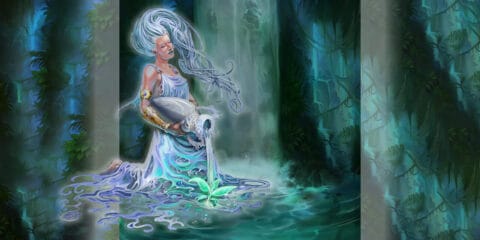
Vasi
Symbol: A glistening teardrop
Alignment: Neutral Good
Suggested Cleric Domain: Water
Titles: Lady of the Lake, Mother of the Ocean, Pearls of the Mist, Tears of the Eternal Bath
Realm: The Plane of Water
Portfolio: lakes, pools, oases, grottos, springs, streams, rivers, balance, wisdom, renewal
History
At the dawn of the world, when the elements collided to create Aventyr, the cosmos shed a single tear that such pain and strife was necessary for Creation. Whether Vasi is the cosmos or the tear—the creator or the healer—her faithful cannot say. She sees the necessity of balance in all thigs, but she is also the balm against struggle, want, and ruin. Vasi watched the Shard of the Sun scorch its path across the earth. She saw the burning fields and forests and she sent the soothing rains. As gods war and the world bleeds, Vasi teaches mercy to the strong and brings strength to the weak.
Clergy
Vasi’s faithful are often loners dedicated to uplifting those who struggle for survival, especially those in harsh, bereft environments. A caretaker of a desert oasis, the guardian of a river’s spring, or a greenthumb in the deep rainforest are all followers of Vasi, whether they know it or not. Shrines and temples built to Vasi are found in places where desolation has been tamed, or amid barren wastelands awaiting the arrival of a blessed cultivator.
Vasi’s shrines and temples are found near deep grottos and remote mountain lakes, anywhere there is a clean source of freshwater, a small shrine is found nearby. Worshippers are many and their influence spread far and wide in Aventyr, for all need water to survive.
At one time, 92 high priests of Vasi were caretakers of 92 holy shrines throughout Aventyr. These shrines served not only as temples to Vasi, but as stabilizing beacons of balance in chaotic regions, where those who were suffering could find solace. Today just one high priest of Vasi remains. Mother May’al is an enigmatic traveler, but she is never found on the road, instead appearing in or near places that are sacred to Vasi: a hidden mountain spring or fledgling desert oasis.
The Mi’unin and the Great Flood
The Mi’unin is a tome penned during the lost empire era, when Grekia ruled a vast swath of Aventyr. When 92 high priests of Vasi recite the litany found within the pages of the Mi’unin, chanting in unison for 92 days and nights in their 92 shrines, the Great Flood is unleashed upon the world. No complete copy of this book is known to exist. Was this “Great Flood” the calamity that brought low the Grekian Empire? Only Vasi knows.
 Zagnexis
Zagnexis
Alignment CE
Portfolio Control, Insects, Poison, Procreation, Vermin
Domains Community (Family), Destruction (Catastrophe), Travel (Exploration), War (Blood)
Favored Weapons Unarmed Strike
Favored Animals Vermin
History
This otherworldly god is much like the hoyrall once were—a massive hive mind. More than a physical being, as the insectoids came to dominate the planet of the alien god’s origin, Zagnexis manifested as the congealed consciousness of their dead. While the other intelligent lifeforms on that world fought valiantly, with a deific being directing the racial hive mind of the hoyrall, they quickly came to rule over all that the insect god could perceive.
Until the Great Schism. The progenitors, cast down from their once mythic forms into the lowly race now known as the draaki, made a desperate cry to the cosmos and it was Zagnexis that answered their plea. Mustering the unimaginable power granted from the complete devotion of an entire race of creatures, the insect god transported his entire physical for into Aventyr—Zagn, along with tens of thousands of hoyrall—directly across the universe and into the Dracoprime’s skull, killing the draconic monstrosity instantly.
For some generations, Exis continued to direct its children on Aventyr, growing a massive army within the fortress-hives of the hoyrall in preparation for an all-out assault to conquer both the surface and the Underworld. Were it not for the intervention of the colloid during The Confluence, it surely would have succeeded. The other alien entity seized upon Exis conduit to its children, breaking the hive mind of the hoyrall and sending its physical counterpart, Zagn, careening into the oceans of Aventyr to wreck havoc upon everything it meets.
Since then, Exis has retained what connections it can to Aventyr, granting powers to its clerics and oracles but little more. The alien god wants nothing more than to expand and procreate, increasing its deific power by generating a second world of followers. Exis is avaricious and without regard for the general balance of natural powers; it will stop at nothing to re-establish its hold over both Zagn and the hoyrall before consuming all of Aventyr.
Appearance
Exis is a spectral insect composed of dozens of different arthropods, its countless limbs, heads, eyes and antennae constantly morphing into new shapes or variations. Zagn is an enormous, multi-headed (and multi-mouthed) segmented worm with thousands upon thousands of legs that span a body measured by miles.
Church of Zagnexis
Temples, churches and shrines devoted to the alien god are commonly found throughout the fortress-hives of the hoyrall and honeycombed into Upperworld mountains, but most are in terrible states of disrepair. The unrest following The Confluence led to the dissolution of hoyrall society, and the sites of worship to the god that once bound them all together were quickly targeted by dissenters and ne’er-do-wells. New churches to Zagnexis are well-appointed and carefully kept, tiled with the carapace of insects in exquisite mosaics that depict the journey of the hoyrall.
Holy Text
There is no written or oral tradition to the worship of Zagnexis; lesser followers are taught the rites of worship through nonverbal communication (through limbs or antennae), and acolytes meld their minds with greater priests in ritual-driven meldings of the minds. Only this devout form of communication is fit for the transmission of the holiest information known to the worshippers of the insect god.

 Ancestor Spirit
Ancestor Spirit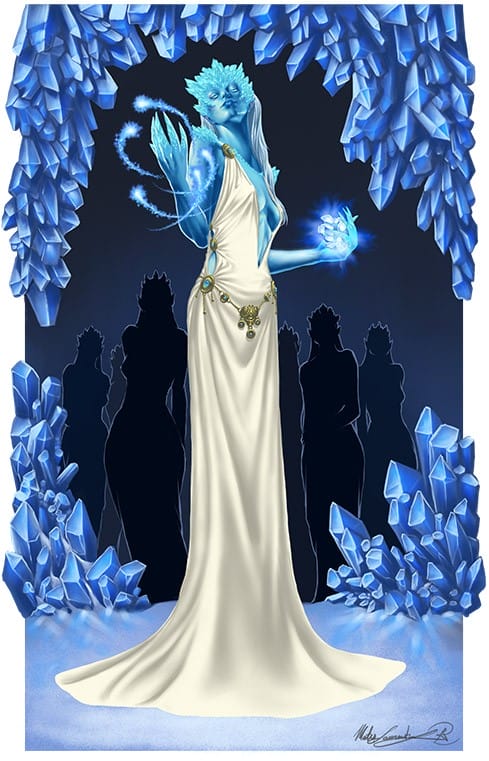 Arnut
Arnut The Axiomatic General
The Axiomatic General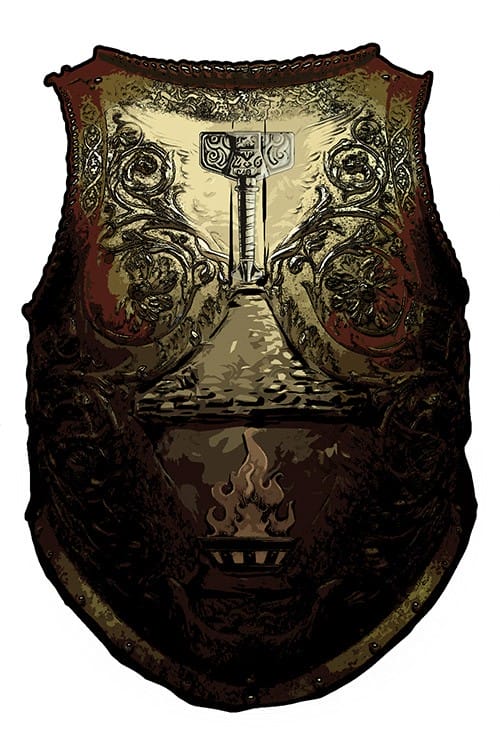 Balir
Balir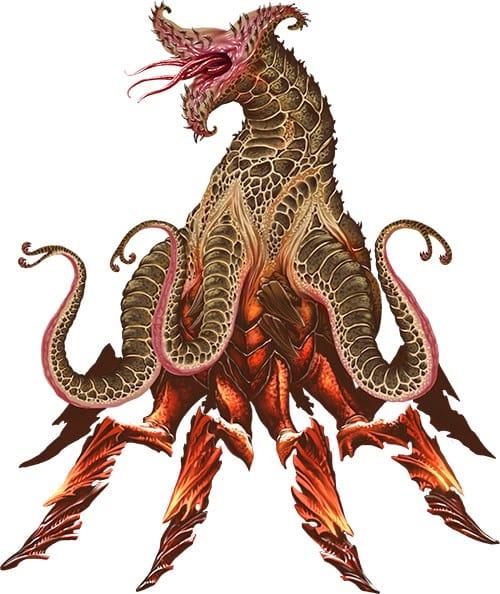 The Current
The Current Eureum
Eureum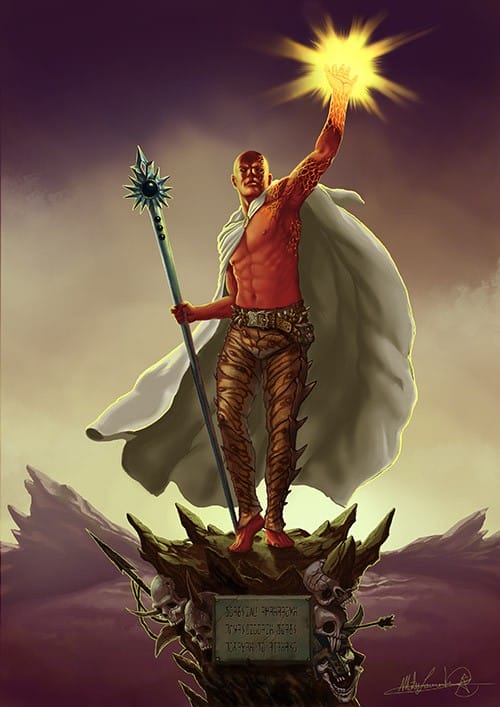 Flaesuros
Flaesuros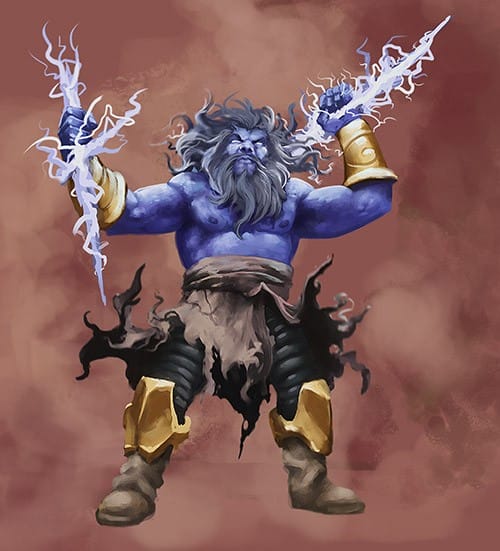 Hado
Hado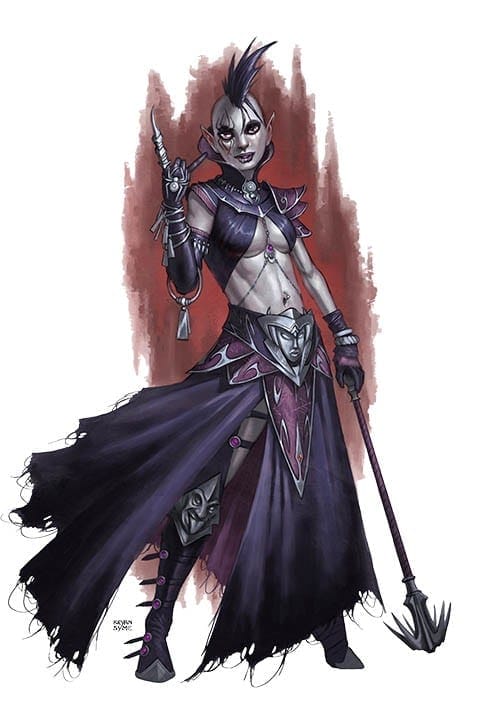 Hivaka
Hivaka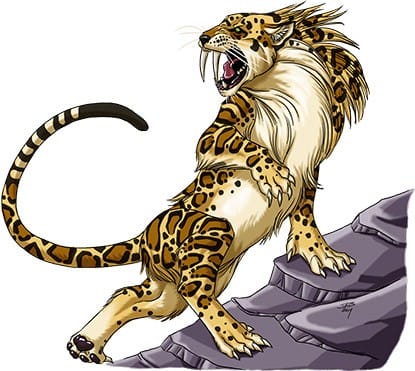 Ja Qua
Ja Qua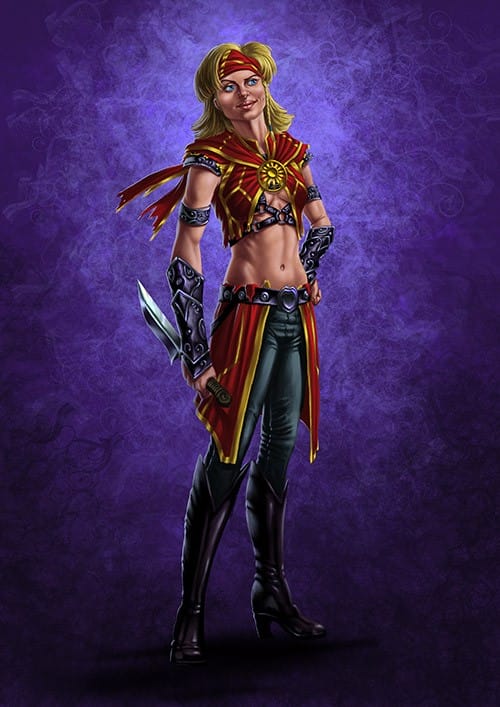 Leacim
Leacim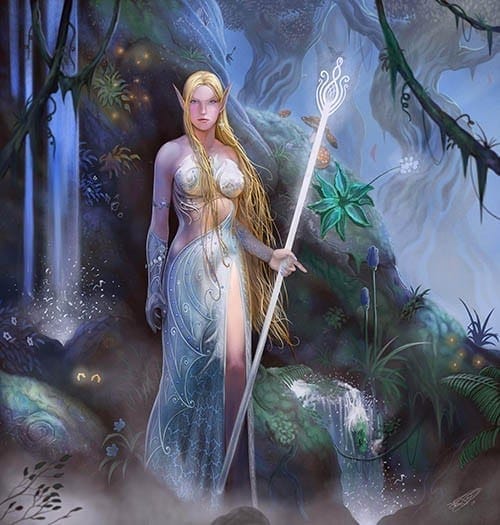 Naneth
Naneth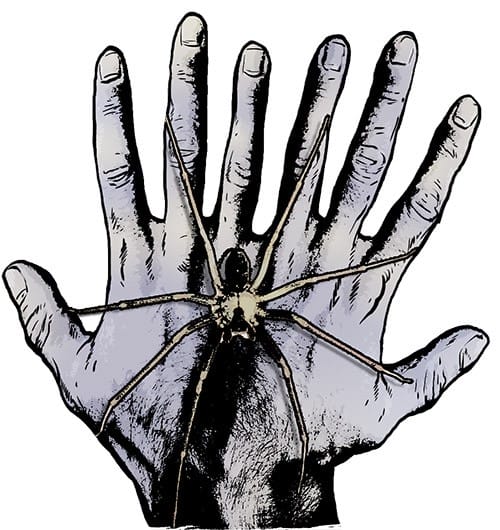 Naraneus
Naraneus The Natural Force
The Natural Force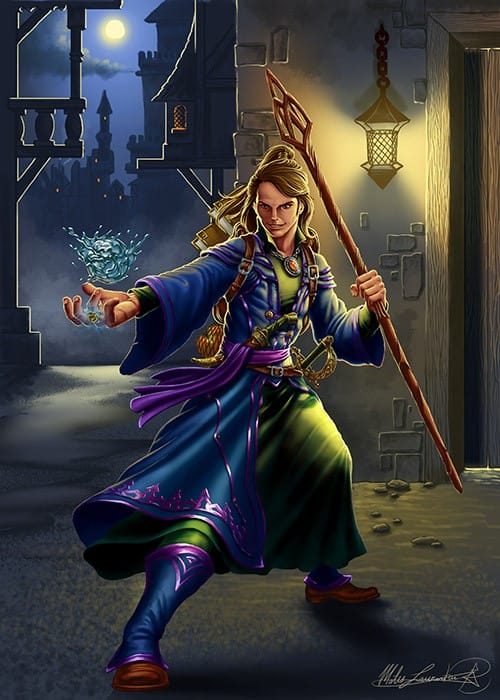 Nearru
Nearru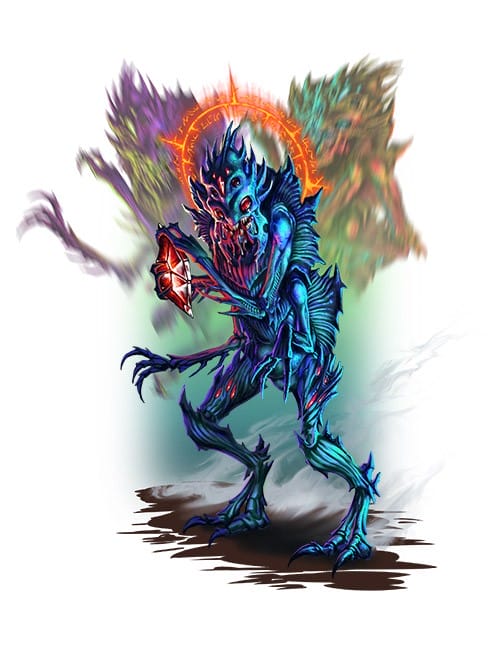 Zagnexis
Zagnexis
Where is Torrent located? Mentioned under Storjeger…
Here is a link to “The Three Sisters” which includes the towns of Sunglor, Drak’kal, and Torrent!
http://adventureaweek.com/campaign-setting/locations/klavek-kingdom/torrent/
I’d suggest putting a link in the description above, Last sentence suggested revision: “Some of the Klavs, tired of living under the influence of the God of War took the story to heart and broke away from Mohkba, founding the town of Torrent (one of the Three Sisters) based on the philosphy of balance.”
Also, you might want to put the names of the three towns in the Three Sisters descriptor text on the top level Klavek Kingdom page, since they don’t appear individually on the map.
It might also be good to mention in the Flaesuros entry that Sunglor is their main bastion, if it is…
Sorry for suggesting additional work. It’s purely self-serving as I’m running a campaign in Aventyr, and these are things I noticed.